Test your knowledge on the Normans:
http://www.funtrivia.com/trivia-quiz/History/The-Norman-Conquest-94537.html
The Middle Ages in Britain cover a huge period : from the  Norman Conquest, which began in 1066, to the devasting Black Death of 1348, the Hundred Years' War with France and the War of the Roses, which finally ended in 1485.
Norman Conquest, which began in 1066, to the devasting Black Death of 1348, the Hundred Years' War with France and the War of the Roses, which finally ended in 1485.
The Normans built impressive castles, imposed a feudal system and carried out a census of the country.

Who were the Normans?
The Normans were people who lived in Normandy in Northern  France. They were originally Vikings from Scandinavia. (The name Normandy comes from the French normand, meaning Norsemen and Normans)
France. They were originally Vikings from Scandinavia. (The name Normandy comes from the French normand, meaning Norsemen and Normans)
The Normans lived in wattle and daub huts with thatched straw roofs.
(After invading Britain they also built castles - to defend their new kingdom
The Normans lived in wattle and daub huts with thatched straw roofs.
(After invading Britain they also built castles - to defend their new kingdom)
Food
There were no supermarkets or shops to buy food so the celts ate what food they could grow or hunt.
Plants
Vegetables e.g. leeks, onions, turnips, parsnips and carrots.
Wild nuts e.g. hazelnuts and walnuts.
Berries e.g. gooseberries, blackberries and blueberries.
Grains to make bread and also porridge
Herbs e.g. fennel, common sorrel, wild garlic, parsley
Leaves e.g. nettles and spinach
Animal
Wild animals e.g. deer, wild boar, fox, beaver, and bear.
Fish e.g. trout, mackerel, and salmon.
Domesticated animals e.g. chicken, goat, sheep and pigs.
Eggs from hens and wild birds eggs.
Insects
Honey from bees
 WILLIAM THE CONQUEROR
WILLIAM THE CONQUEROR
William, Duke of Normandy was the leaderof the Normans.William was born in 1027. He became duke of Normandy when he was only seven years old.
Why did William the Conqueror invade England?
William laid claim to the English throne after Edward died. He was a distant cousin of Edward and said that Edward had promised him the throne when visiting France in 1051. He even said his claim had been accepted by Harold Godwinson in 1064, when Harold had been blown onto the Norman shore by a storm. William invaded England to become King and claim the throne from Harold.
When did William the Conqueror invade England?
The Norman Invasion started when William, Duke of Normandy's 7,000 soldiers landed at Pevensey on the morning of the 28th September 1066.
Where did William fight Harold for the English Throne?
Harold and William's armies met on Senlac Hill*, seven miles (10 km) from Hastings.(Today the village where the battle took place is simply called Battle.)
What is the name of the famous battle between William and Harold?
The Battle of Hastings.
What date did the Battle of Hastings take place on?
It began at about nine o'clock on the 14th October 1066 and lasted most of the day.
The battle lasted six hours.
Why did William won the Battle of Hastings?
- William's army had time to rest before the battle. Harold Godwinson's army was tired and they did not have time to prepare properly for the battle. The English army had already fought the Battle of Stamford Bridge that day and had to march quickly down to the battlefield outside Hastings. They marched 50 miles a day!
- William's army was stronger. He had better trained soldiers and had the use of a strong cavalry (men on horseback) and archers whereas Harold did not.
- William's army pretended to flee. Many of Harold's men broke their sheild wall to chase after them but as they did William and his army turned back and slaughtered them.
What is the Bayeux Tapestry about?
The Bayeux Tapestry tells the story, in pictures ,of the events leading up to and including the Battle of Hastings on October 14, 1066. The story is told from the Norman point of view. There is no English equivalent so it is very difficult to confirm or dispute some of the details on the tapestry.
Why is it called the Bayeux Tapestry?
It is called the Bayeux Tapestry because it has been kept at Bayeux in  France probably ever since it was made.Test your knowledge on the Normans:
France probably ever since it was made.Test your knowledge on the Normans:
http://www.funtrivia.com/trivia-quiz/History/The-Norman-Conquest-94537.html
The Middle Ages in Britain cover a huge period : from the  Norman Conquest, which began in 1066, to the devasting Black Death of 1348, the Hundred Years' War with France and the War of the Roses, which finally ended in 1485.
Norman Conquest, which began in 1066, to the devasting Black Death of 1348, the Hundred Years' War with France and the War of the Roses, which finally ended in 1485.
The Normans built impressive castles, imposed a feudal system and carried out a census of the country.

Who were the Normans?
The Normans were people who lived in Normandy in Northern  France. They were originally Vikings from Scandinavia. (The name Normandy comes from the French normand, meaning Norsemen and Normans)
France. They were originally Vikings from Scandinavia. (The name Normandy comes from the French normand, meaning Norsemen and Normans)
The Normans lived in wattle and daub huts with thatched straw roofs.
(After invading Britain they also built castles - to defend their new kingdom)
The Normans lived in wattle and daub huts with thatched straw roofs.
(After invading Britain they also built castles - to defend their new kingdom)
Food
There were no supermarkets or shops to buy food so the celts ate what food they could grow or hunt.
Plants
Vegetables e.g. leeks, onions, turnips, parsnips and carrots.
Wild nuts e.g. hazelnuts and walnuts.
Berries e.g. gooseberries, blackberries and blueberries.
Grains to make bread and also porridge
Herbs e.g. fennel, common sorrel, wild garlic, parsley
Leaves e.g. nettles and spinach
Animal
Wild animals e.g. deer, wild boar, fox, beaver, and bear.
Fish e.g. trout, mackerel, and salmon.
Domesticated animals e.g. chicken, goat, sheep and pigs.
Eggs from hens and wild birds eggs.
Insects
Honey from bees
 WILLIAM THE CONQUEROR
WILLIAM THE CONQUEROR
William, Duke of Normandy was the leaderof the Normans.William was born in 1027. He became duke of Normandy when he was only seven years old.
Why did William the Conqueror invade England?
William laid claim to the English throne after Edward died. He was a distant cousin of Edward and said that Edward had promised him the throne when visiting France in 1051. He even said his claim had been accepted by Harold Godwinson in 1064, when Harold had been blown onto the Norman shore by a storm. William invaded England to become King and claim the throne from Harold.
When did William the Conqueror invade England?
The Norman Invasion started when William, Duke of Normandy's 7,000 soldiers landed at Pevensey on the morning of the 28th September 1066.
Where did William fight Harold for the English Throne?
Harold and William's armies met on Senlac Hill*, seven miles (10 km) from Hastings.(Today the village where the battle took place is simply called Battle.)
What is the name of the famous battle between William and Harold?
The Battle of Hastings.
What date did the Battle of Hastings take place on?
It began at about nine o'clock on the 14th October 1066 and lasted most of the day.
The battle lasted six hours.
Why did William won the Battle of Hastings?
- William's army had time to rest before the battle. Harold Godwinson's army was tired and they did not have time to prepare properly for the battle. The English army had already fought the Battle of Stamford Bridge that day and had to march quickly down to the battlefield outside Hastings. They marched 50 miles a day!
- William's army was stronger. He had better trained soldiers and had the use of a strong cavalry (men on horseback) and archers whereas Harold did not.
- William's army pretended to flee. Many of Harold's men broke their sheild wall to chase after them but as they did William and his army turned back and slaughtered them.
What is the Bayeux Tapestry about?
The Bayeux Tapestry tells the story, in pictures ,of the events leading up to and including the Battle of Hastings on October 14, 1066. The story is told from the Norman point of view. There is no English equivalent so it is very difficult to confirm or dispute some of the details on the tapestry.
Why is it called the Bayeux Tapestry?
It is called the Bayeux Tapestry because it has been kept at Bayeux in  France probably ever since it was made.v
France probably ever since it was made.v



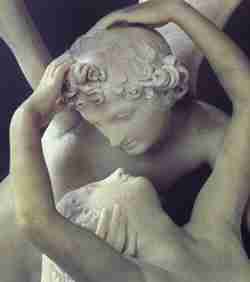 and the couple wed in a ceremony attended by the Gods.
and the couple wed in a ceremony attended by the Gods.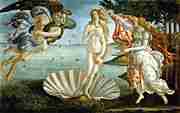 the goddess of love and beauty.
the goddess of love and beauty.
 SAINT VALENTINE'S DAY
SAINT VALENTINE'S DAY 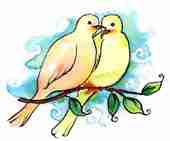 Who was Saint Valentine ?
Who was Saint Valentine ? 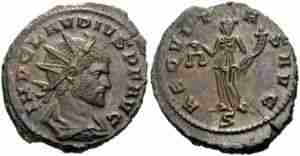 When Claudius II became the emperor he believed that soldiers
When Claudius II became the emperor he believed that soldiers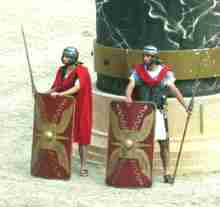 would be unable to concentrate on fighting if they were married.
would be unable to concentrate on fighting if they were married.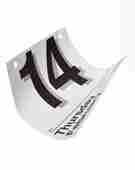 CUPID
CUPID 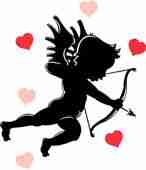



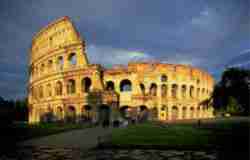
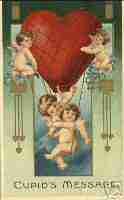




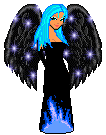

.gif)

